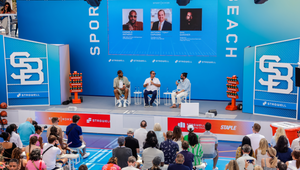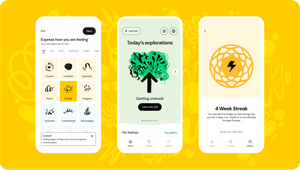
“Rip up the Playbook Because AI Is Rewriting It”

Pat McQueen leads Code and Theory’s product strategy department and steers our largest enterprise partnerships. Delivering 50+ successful digital products over the past five years, Pat has launched award-winning experiences for JPMorgan Chase, Microsoft, and more. Previously, Pat led product strategy at AREA 17. Earlier in his career, he created social impact campaigns at Purpose and Cone Communications, and taught digital organising strategies to members of the United Steelworkers union. Pat is a native upstate New Yorker and lives with his wife, golden retriever and cats in Westchester, where he alternates his free time between snowboarding, hi-fi audio and racetrack driving.
Q> What is the biggest force driving product strategy at the moment and what should clients be thinking about immediately?
Pat> I could just say AI, but I think that’s part of a larger restlessness. The biggest force is the difficulty innovating digital products - really innovating - at the enterprise level. That’s where the restlessness comes in. We know what works in almost every industry now. There’s a playbook for clean, utilitarian design. There’s a list of features.
So, what we’re really thinking about is how to change how people fundamentally engage with the Internet. I mean that literally. Most people are frustrated by chatbots, but most AI discussions in 2024 centre around some sort of tired chat interface. We all need to be thinking about new engagement patterns and how that creates new digital revenue streams.
Q> Looking beyond the moment, where is it heading and what should clients be planning for?
Pat> My colleague Scott Lindenbaum said to me in a recent product review that we need to be designing for AI as a user of all of our products. That’s where it’s at right there. That’s the answer. If you plan for an AI co-pilot to browse your digital ecosystem, transform your content into a format it chooses and deliver it to a user you have a less direct connection with, then you’re changing everything. You’re ripping up the playbook.
It’s a scary thought but also exciting because nobody has solved for that yet. We all have an equal chance to make an impact.
Q> Where are they wasting too much time?
Pat> On navigation. On which content gets an individual webpage. It just doesn’t matter. What really makes a difference is all the content and technical architecture lying underneath the front end of a site or app. When that gets rigorously tagged and integrated, you can get a message, call-to-action or a buy button anywhere. Spend time on the things that make money.
Q> What are you currently most excited about in terms of what Code and Theory can offer clients?
Pat> If you need to get a message to anyone in the world, we can get it there. That’s how we think about anticipation. Across our disciplines, we have the power to design an interface that can adapt to your needs, powered by your data, using your tech. The ideas that we had more than a decade ago about personalising experiences down to the individual, down to their mood - we’re built to make those a reality now. We actually getting to the point where we can anticipate customers’ needs before they ask.
I didn’t fully appreciate the rigor it takes to make that true before I came to Code and Theory. Five years in, I still think we’re unique in approaching it that way. We’re 50% engineers and 50% creatives. Few teams can answer the why of a digital product, even rarer are the ones that can add the how. That’s the standard we hold ourselves to.
Q> What is the one thing you’d tell your younger self?
Pat> Be a joy to work with.















